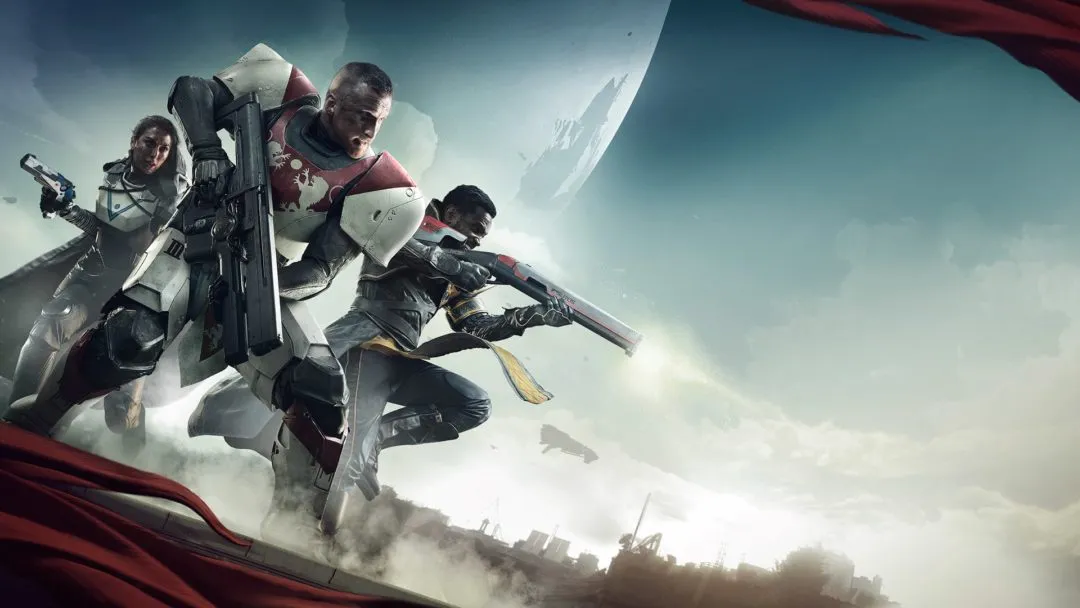
In the early 70’s, three things arrived on the scene:
1) Roleplaying games
2) Video games
3) Me
A lot of my time is spent thinking about and obsessively over-analyzing videogames. Consoles. PC games. Web-based games. Old-school games. Technology, piracy, DRM, and quick time events. No subject is so tedious that I can’t spend a thousand words deconstructing it as long as I can find someone who will endure my ramblings and give me a half-listening nod every couple of minutes. If I ever lost my web audience I’d probably look for passed out hobos and tell them my thoughts on how advancing graphics hardware has been detrimental to gameplay mechanics over the last decade.
Some people have wondered why, if I’m such a fan of tabletop roleplaying games (I run a site called “Twenty Sided” after all), I spend my time talking about videogames until someone gets fed up and knocks me unconscious with a bust of Gary Gygax. The short answer is because I like to post pictures and videogame screenshots are a lot more fun to look at than photographs of guys sitting around a card table eating Doritos and pretending to be wizards. But the real answer is that videogames are where all the interesting work is being done because that’s where we have the most holes in our knowledge.
Technologically, roleplaying games are pretty much the same as they were thirty years ago. Paper, pencils, and plastic dice. During that same span of time the videogames industry has gone through so many technological revolutions that they’re almost coming out with new devices and controllers before it’s time to replace the batteries on the old one. The evolutionary chain that led us from Pong to Prince of Persia is like watching a zygote grow into a twice-divorced Molecular Biochemist and American Civil War enthusiast in the space of time it takes to microwave a Hot Pocket. But while videogames have evolved beyond the imagination of anyone in the early days, our understanding of the medium – what they are and why people play them – is light years behind their simplistic tabletop counterparts. Sometimes it even seems like our understanding of games is regressing, but maybe it’s just the fixed save points talking.
Part of the reason is that it’s pretty hard to sit at a table with four other people and not notice how different their goals and motivations are. Anyone running a tabletop game is a game designer on some level. And unlike videogame designers, you aren’t working within a loop of development, playtesting, and feedback. If you’re running a game, you can look across the table see how people are reacting right away. You can change the game at any time and see how players react to different elements. More combat? More story? Less travel? More loot? More intrigue? Less comic relief? You can observe behavior and fine tune the experience as you go, crafting the best game you can for everyone else.
Contrast this with videogames. A game designer makes a game without much contact with the audience. Then players get the game, and a vast majority of them play it in isolation. The most active ones might hop onto a forum later and argue with each other about different parts of the game. Maybe some of that feedback can be applied to the next game, but often that sort of feedback is more dross than insight. “Quick time events suck” isn’t nearly as useful to the curious developer than “quick time events aren’t rewarding because there aren’t any interesting decisions to be made.”

The introduction of the internet has done a lot to show just how confused our understanding is. Players used to be able to sit at home and imagine that everyone else playing the game had more or less the same experience they did. Now they can read what other players are saying, and are discovering that the world is full of crazy people. You like auto-leveling foes? What’s wrong with you? You want more obscure boss fights? Nutter. You like games where you get sent back to the beginning of the level? Masochist. Players are slowly realizing what tabletop enthusiasts realized decades ago: There are all kinds of players with wildly different preferences, and there’s no one experience that can hope to please them all.
If you want to force-feed your brain until it pukes, you could try reading up on Gamist, Narrativist, Simulationist theory, where players are described in robust terms that define them according to why they game. A couple of roleplayers can talk to each other for a minute or two and immediately have a pretty clear understanding of what sorts of things the other person is looking for in a game. Some people want to take part in and help weave an epic tale, to inhabit a deep and authentic world of lifelike characters. Other players just want to pit themselves against an endless series of cunning challenges that test their strategic mettle.
Contrast this with how videogamers are divided up: Hardcore. Mainstream. Casual. So instead of identifying players by what they look for in gaming, we end up sorting players by how much they play or how skilled they are.
This is a shame, because if we’re going to pigeonhole gamers there are far better and more interesting divisions we could use. I’d much rather we sort people by why they game than by how well they do it. It wouldn’t be perfect, but it would be better than what we have now. I’m constantly amazed by the sheer diversity of motivations people have for videogaming. In those low-tech early years games were purely a test of skill. You put in a quarter and played until you lost. That sort of experience has been relegated to flash-based browser games and retro remakes. Now there are games which are explicitly not about skill, but instead about exploration and experimentation. (Spore.) Many are about building, caring for, and optimizing complex systems. (Sim and Tycoon games.) Some are overtly social, either with in-game characters or with other players. (Animal Crossing, party games.) Puzzles. Player-versus player. Storytelling. The selection of ways that games can appeal to people is large, and every few years it seems like someone adds a new one.
My goal here is not to define every possible type of game, but to point out that a well-designed game will be intentional about how it meets these player expectations. A lot of games could be greatly improved if the designer just asked, “What need am I trying to meet with this gameplay element?” Most good games actually focus on a small handful of these goals and attempt to do them well, and most bland or annoying games fumble around throwing elements at the player haphazardly.
Q: Why do we have a jumping puzzle here?
A: Because other games have jumping puzzles?
(Image)
Shamus Young is the author of Twenty Sided, the vandal behind Stolen Pixels, and believes that if he could just find a way to use my plastic dice with a videogame, then he would be truly happy.




Published: Apr 24, 2009 09:00 pm